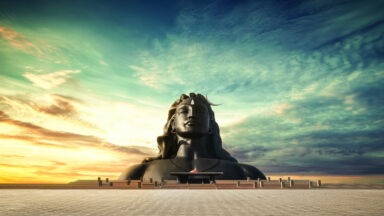What Really Happens On A Yoga Retreat?

When I announce that I’m leading a yoga retreat, I get a lot of interesting questions from those who are considering coming along. Anything from “Can I bring my blow-dryer?” (Even though we’re probably talking about impossibly humid climates), to whispered concerns about whether they’ll be able to have a glass of wine or a piece of meat, comes up. Google “yoga retreat” and you’ll find: Food & Wine magazine endorsed Foodie & Yoga Retreats, Trademarked Bikini Boot Camp Yoga Retreats, Wine, Chocolate & Yoga, Surfing & Yoga, as well as those replete with vipassana (silence) and/or fasting, chanting, and other forms of abstinence out there. There is, in fact, a lid for every pot, when it comes to how you spend your time on a yoga retreat. However, if you’re under the impression that all we do is sit cross-legged for a week and then go home, keep reading.
I’ve been coordinating and leading yoga retreats for about ten years now. On my retreats, we typically start our day with a two-hour yoga practice, and then go out into the country we’re visiting for adventure. In Costa Rica we zip-line, paddleboard the mangroves to a private black sand beach, take surf lessons, and horseback ride. In Bali, we visit Tirta Empul for a purification ritual in their sacred spring pools, do sunrise salutations at Gunung Batur (a live volcano), bicycle through vibrant green rice fields, attend a Kekak (fire) Dance on the cliffs of Uluwatu, and choose our fresh fish in Jimbaran Bay, for a feast with our tables right on the water.
There are times when the unexpected happens in paradise, though. I’ve witnessed someone break their jaw falling off their bicycle, bruised ribs crashing their ATV, our posh resort taken over by an ant war, monkeys stealing diamond earrings, people hook-up, break-up, and even someone nearly getting gored by a bull. One year in Bali, we prepared for our pre-dawn Gunung Batur salutations, looking out over the coral, fuchsia and salmon colors of the pending sunrise, we set up our mats on the long, outside deck, mesmerized by the setting. Julie (whose importance to LA radio was such that her iPhone had to have reception no matter where she was) announced…
“Michael Jackson died.”
It was like a mental car crash — the celestial scene in front of us colliding with the Breaking News culture we’d been distancing ourselves from. “And Farrah Fawcett too.” she added, as if the King of Pop weren’t surreal enough.
Yes, sometimes it is the unforeseen, but mostly what happens on retreat is a special bond, both inside the yoga room and out. We gather from around the world, with our varied travel and yoga backgrounds, and renew our spirits together. In yogic philosophy, the five layers covering the Self are called Koshas; imagine them like the layers of an onion. The outermost layer is the Annamaya Kosha (skin and bones), followed by the Pranamaya Kosha (life force body), Manomaya Kosha (mind body), Vijanamaya Kosha (intellectual body), and Vijanamaya Kosha (soul body). As we make our way through our retreat week, I can almost see the transformation infiltrate each of these layers within us. Sure, someone might learn how to do a headstand without the wall, or balance in crow pose, but it’s the collective experience of the journey that regenerates and inspires from skin to soul.
There’s nothing self-conscious about this shift. It is an organic immersion that lends itself to the universal “oneness” most spiritual practices and religions espouse. When we slow down, we allow ourselves to see the beauty around us, as well as within us. To quote the late Irish poet and philosopher John O’Donohue, “The human soul does not merely hunger for beauty, we feel most alive in the presence of what is beautiful—it returns us, often in fleeting but sustaining moments, to our highest selves. Beauty ennobles the heart and reminds us of the infinity within us.”
What really happens on a yoga retreat? Whether you’re a foodie, or looking for fasting – enjoy surfing or silence, our yoga mats become magic carpets, to see both the world around us and the infinity within.
I would love to hear from you! Tell us what really happened on your yoga retreat in the comments section below.
Earth: Reclaim Your Connection to Gaia thru Ritual & Reverence

The natural environment is not only our home, but the foundation of our physical structure. Connection to nature has traditionally encompassed a physical relationship and rested on the assumption of spiritual connection. As the western world developed, belief of a spiritual connection with nature began to lose favor in lieu of a new mechanistic worldview. The scientific revolution, at the forefront of this change, contended that the natural world was something that could be quantifiably measured and dominated. However, as scientific understanding of the phenomenal world evolves, science itself may exemplify the value of ancient teachings. This article explores the history of our relationship with nature and how the natural world is in fact deeply connected to our body and being. It concludes with a ritual of the senses, designed to take you deep into the intelligence of nature and in so doing, deep into the wisdom of Self.





































